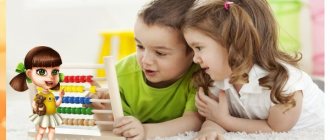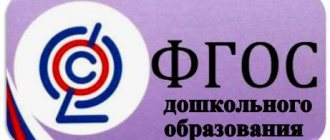What is the method and technique of teaching?
A teaching method is a way of interaction between an adult and a child that helps to effectively solve educational problems.
Pedagogical teaching techniques are one of the components of the method, the action of which realizes it fully. It is important to be able to separate the methods of mental activity from the methods of educational work. The mental techniques of child development are the same in different modes of interaction. Only their correct combination has a development effect, and, based on this, it is very important to apply them in a certain sequence. Identical techniques can be used in any teaching method, but in interaction with other techniques they create a completely different method. For example, a technique such as memorization is used in both reproductive and problem-search methods. But in the first case it is the main one, and in the second case it is secondary.
Teaching techniques and methods can be subjective or objective. Objective ones are guided by preschool didactics. But the subjective part of the method depends on the skill of the teacher.
Programs, technologies, methods...
We suggest you understand such concepts as the preschool education program, technologies and methods of education.
The preschool education program is a regulatory and management document that defines the goals and objectives of the educational process.
Preschool education technologies are a set of practically sound methods aimed at achieving certain results in educational activities.
Preschool education methods are methods and forms of working with children aimed at developing the personality of each child in a particular area. We emphasize that each method of preschool education is focused on one aspect of children’s development. For example, there are methods of physical education, the formation of mathematical concepts, guidance of visual activities, etc.
That is, if a preschool education program is just a document that states what to strive for, then methods and technologies are a real tool that allows you to achieve the goals specified in the program. At the same time, you need to understand that the techniques are rather theoretical in nature, while the technologies are of practical origin. Almost all technologies that exist today have been developed by educators and educators based on their own experience in raising and teaching children .
By the way, today kindergartens use both original methods (for example, the methods of the Nikitins, Montessori, Doman, etc.) and methods developed by specialists based on the variability of the Law “On Education”.
Selection of teaching methods
The choice of teaching method for preschool children is most often made by the teacher in any form. When choosing a method, the teacher takes into account a number of factors, such as:
- Educational goals facing a preschool institution, based on the state standard and the guidelines of modern didactics.
- Taking into account the peculiarities of the content of the science or subject being studied.
- Features of the teaching methodology of a specific academic discipline, due to its specifics.
- Purpose, objectives and content of educational material for a specific age level.
- Taking into account the characteristics and individualities of children, their age-related capabilities and needs.
- Level of readiness of children. They take into account the level of education, development and knowledge.
- Material and technical capabilities of the children's educational institution, the availability of the necessary visuals, methodological and teaching aids, and technical means.
- The capabilities and characteristics of the teacher, the level of theoretical and practical preparedness, methodological skills, and his personal qualities.
Get paid for your student work
Coursework, abstracts or other works
Methods and techniques to help organize children in the classroom.
When planning GCD, I note in advance what methods and techniques I will use in the lesson. The attention of the four-year-old children with whom I work is not yet stable. To ensure a lasting assimilation of knowledge, they must be interested in work. It is necessary to regulate the employment of children. Children quickly become fed up and become very tired of activities that they have to perform under duress. Also, students can become overexcited from the abundance of stimuli.
Visual methods and techniques
The main principle of children's thinking is the principle of clarity. Therefore, in my classes I use visual methods and techniques that will ensure the high efficiency of the educational process.
Observation 1. Recognize, determine characteristics.
—in classes on the surrounding world while studying the topic “Flowers”, I propose to look at various plants and name only the flowers;
-in classes on speech development when studying the topic “Sound”, I suggest watching me, my pronunciation (how my lips are positioned, whether something prevents me from pronouncing the sound in a drawn-out manner).
2. Determine the nature of changes or transformation of an object.
For example:
- during classes on the surrounding world when studying seasonal changes in plants - the children and I make observations on a walk about what happened to the trees in the fall; We analyze visual information in routine moments during classes.
-in mathematics classes when studying the number 3 - establish what will change if you add another one to two subjects, this is necessarily visual information.
3. Establish the state of an object based on individual characteristics.
For example:
- during classes on the surrounding world when studying the topic “Parts of the day” - determine by the state of the sky and the position of the sun which part of the day has arrived;
- during classes on the surrounding world when studying the topic “Animals” - determine who it is by the type of paws (tail or ears).
Demonstration
A demonstration is a visual display of an object. No verbal explanation in kindergarten classes will be effective if it is not accompanied by the demonstration of various visual aids. To get children interested in the topic of the lesson, I use a demonstration before the lesson:
- objects, natural objects;
- subject or didactic pictures;
-book illustrations;
-reproductions;
-layouts.
The demonstration method covers the following teaching techniques:
-Demonstration of items. I often use such methodological techniques in art classes. For example, before offering to draw an apple, I immediately show it to the children and suggest that they take a good look and describe its shape, size, and color.
-Sample demonstration. For example, I show children a sample of the application that they will perform or a sample of writing letter elements, etc.
-Demonstration of illustrations and reproductions. This technique is used when there is no possibility of direct perception of the object. For example, when studying the colors of the rainbow, if it is not in the sky at that time, I show the children a picture in a book.
Practical methods and techniques
Practical methodological techniques in kindergarten classes help preschoolers to more deeply understand the surrounding reality. Practical methods provide a higher degree of knowledge acquisition than any other didactic techniques. A child will remember much better that lemon is sour if he tastes it himself, etc. There are four main methods.
Exercises
-Exercises are the repeated repetition of various actions (practical or mental) of a certain content.
Experiment
In kindergarten we practice only the simplest experiments that help children gain new knowledge about the environment. During the experiment, preschoolers interact with objects to learn their properties and relationships with other objects.
I suggest the following tasks:
- determine which object sinks and which does not;
- turn snow into water;
-conduct experiments with clay, etc.
Thanks to this method, we form visual and effective thinking in children.
Modeling
The modeling method is based on the principle of replacing a real object with a symbol, image, sign. The use of this method contributes to the development of skills to compare, abstract, and generalize essential features.
Games
During didactic games, children are asked to recreate a specific situation, “live” it and gain some experience of acting in certain conditions. The use of this method presupposes the presence of gaming equipment, the distribution of roles and the implementation of gaming actions.
The gaming method forms creative thinking, develops imagination, helps the child learn to behave at ease, and relieve psychological stress.
Verbal methods and techniques
Verbal methods provide live communication between the teacher and children.
Story or reading
A story is an effective verbal method that allows you to present information in an accessible way for children. I use literary works or create stories from personal life experiences. The story can be used during any lesson. After listening to the story, I check the degree to which the preschoolers have mastered its content.
Conversation
During the conversation, each child has the opportunity to share his opinion and experience with the entire team. We conduct conversations after listening to a literary work or watching a video.
We widely use verbal methodological techniques in speech development classes. These include:
-speech sample - I give an example of correct pronunciation, sentence construction, use of intonation, etc.;
- repeated pronunciation - a sound, word or phrase is repeated many times to assimilate or remember (for example, learn a tongue twister, remember the correct use of stress in a word);
I supplement the verbal method with visual or practical methods. This promotes the development of children's speech, creative imagination, and cognitive activity.
In my classes with children I use a variety of methods and techniques, alternating and combining them. At the same time, I conduct a “live” dialogue with the kids, encourage them to take direct action, and rely on children’s life experience. Such conditions for the educational process in kindergarten will ensure its high efficiency.



